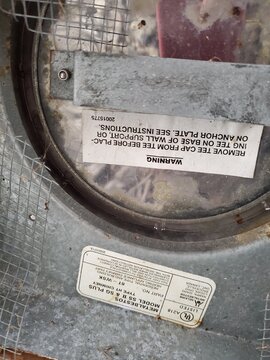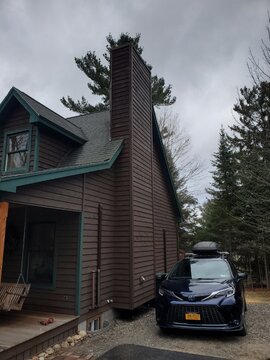I am thinking about abandoning my plan to install a Montpelier II in place of my current ZC. We really wanted the look of a fireplace, which is why I snapped up a lightly used VC Montpelier II on marketplace before doing enough research. It seems I will need to build a full masonry fireplace to install the Montpelier as my current ZC is not nearly large enough to fit it in place.
But I need some collective wisdom, since I don't want to make the same mistake again.
My current ZC is this model https://www.manualslib.com/manual/1424702/Selkirk-640-Zc40.html installed flush to wall.
Hearth is about 14 inches tall, maybe 16 inches deep and 60 inches wide.
Install would be on the first floor of our two story house with basement below.
1200sq ft first floor, 800ish second floor.
Install room is about 16x16 and has double-height (16ft) ceiling, fairly open floor plan.
Chimney is 22-24 feet from where stove vent would exit.
Home was built in 2002(ish) and generally exhibits quality workmanship (although not "inspired" workmanship).
I am open to significantly modifying our space to make something work. We hate the current look (I swear it's made from countertop remnants).
Should we keep the current hearth height? Eliminate it and bring it down to floor level? Should a stove "tuck" into where the ZC now sits, or just wall off and have stove proper distance from wall? Rear vent or top vent? What considerations are needed to use existing chimney?
We want to add the look of a chimney inside the house as well to build some character into our main living floor. Granite "veneer" stone about 5-6ft up capped with a mantel then just drywall (for weight and cost) the remaining 10-11ft to ceiling. This faux chimney would only need to be about 6 inches deep to create the effect, I think.
Our primary heating is a system of Haier ASHPs, but they aren't very efficient below -15F and won't keep up at all under -20F. We currently have an oil boiler and radiant fin-tube, but want to rip it out. Whatever we install won't get a huge amount of use, but it needs to be capable when it is called into service.
The VC Montpellier II we picked up cost just under $2k (MSRP is close to twice that). We like the look of Hearthstone units and Vermont Casting. We're located in NE New York (near Lake Placid) so both companies are pretty available in this market. I'm very open to other suggestions.
So, what do you all think? Simpler/better to ditch the VC Montpelier retrofit idea and use a freestanding woodstove? Or should I make it work?
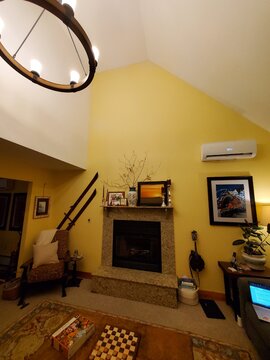
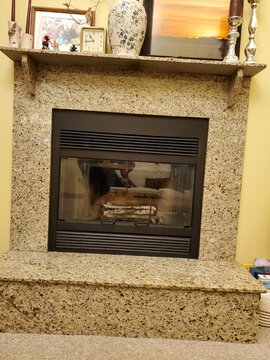
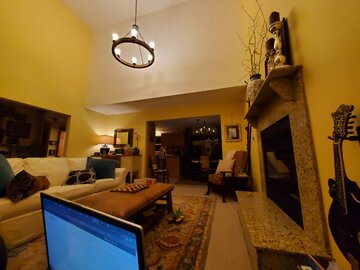
But I need some collective wisdom, since I don't want to make the same mistake again.
My current ZC is this model https://www.manualslib.com/manual/1424702/Selkirk-640-Zc40.html installed flush to wall.
Hearth is about 14 inches tall, maybe 16 inches deep and 60 inches wide.
Install would be on the first floor of our two story house with basement below.
1200sq ft first floor, 800ish second floor.
Install room is about 16x16 and has double-height (16ft) ceiling, fairly open floor plan.
Chimney is 22-24 feet from where stove vent would exit.
Home was built in 2002(ish) and generally exhibits quality workmanship (although not "inspired" workmanship).
I am open to significantly modifying our space to make something work. We hate the current look (I swear it's made from countertop remnants).
Should we keep the current hearth height? Eliminate it and bring it down to floor level? Should a stove "tuck" into where the ZC now sits, or just wall off and have stove proper distance from wall? Rear vent or top vent? What considerations are needed to use existing chimney?
We want to add the look of a chimney inside the house as well to build some character into our main living floor. Granite "veneer" stone about 5-6ft up capped with a mantel then just drywall (for weight and cost) the remaining 10-11ft to ceiling. This faux chimney would only need to be about 6 inches deep to create the effect, I think.
Our primary heating is a system of Haier ASHPs, but they aren't very efficient below -15F and won't keep up at all under -20F. We currently have an oil boiler and radiant fin-tube, but want to rip it out. Whatever we install won't get a huge amount of use, but it needs to be capable when it is called into service.
The VC Montpellier II we picked up cost just under $2k (MSRP is close to twice that). We like the look of Hearthstone units and Vermont Casting. We're located in NE New York (near Lake Placid) so both companies are pretty available in this market. I'm very open to other suggestions.
So, what do you all think? Simpler/better to ditch the VC Montpelier retrofit idea and use a freestanding woodstove? Or should I make it work?





